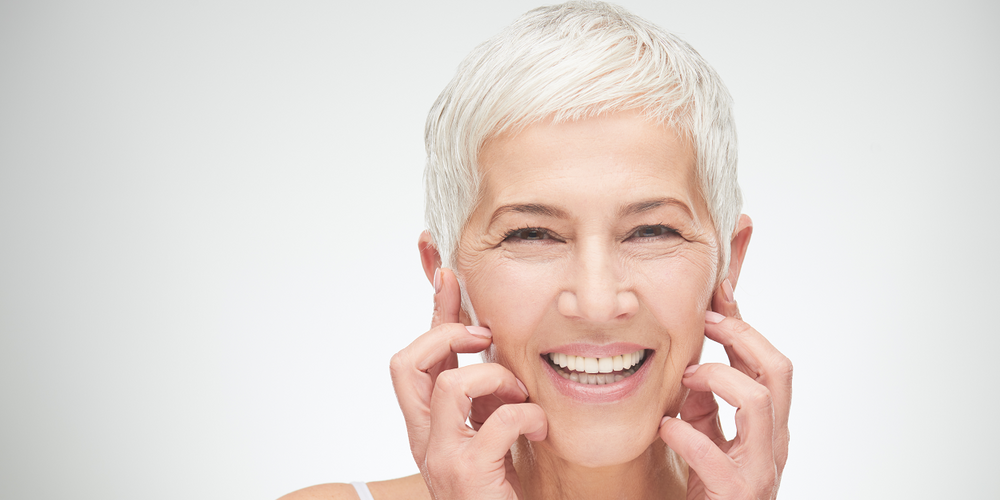Chemotherapy and Hair Loss: What to Expect and When to Expect It

Hair loss is a common side effect of chemotherapy, hormonal therapy, targeted therapy, immunotherapy, and radiation therapy—all of which are common breast cancer treatments. Fortunately, most of this hair loss is temporary.
Seeing your changing appearance in the mirror and more hair in your hairbrush daily can significantly affect your mood and result in a harsher outlook. So, what can you do about it?
First, always consult with your doctor before taking any measures to get a full picture of your specific circumstance in the future. Every person and cancer treatment is unique, meaning you can expect a range of symptoms from minor hair thinning to complete hair loss, depending on your specific treatment and dosage.
But once that’s done, we’ve got you covered.
When Hair Loss Starts After Chemo: Understanding the Process
By definition, chemotherapy attacks rapidly growing cancer cells—but it doesn’t discriminate. This means the treatment attacks any rapidly growing cells within your body, including your hair follicles, which are some of the fastest-growing cells in your body. In addition to hair loss on your scalp, eyelashes, armpit, eyebrows, and other body hair can also fall out. Thus far, no treatment can guarantee you won’t experience any hair loss.
This is one of the biggest concerns for men and women diagnosed with cancer and prescribed chemotherapy or another treatment. Many people see hair loss as the most significant sign that someone has cancer—something most people prefer not to advertise to the rest of the world.
Understanding the Timeline of Hair Loss
Hair loss usually begins roughly two to four weeks into your treatment and may fall out gradually or more significantly. You’ll likely start seeing more hair in the shower drain or find loose hairs on your pillowcase. It’s common for hair loss to occur up to a few weeks after your last chemo treatment. Over the coming weeks, your hair will begin to grow again, but it might not look or feel like it used to. Usually, this change in appearance and texture is temporary.
Don’t be scared or surprised if your hair grows gray—give the pigment cells in your follicles time to recharge before they can begin functioning again. Your hair might also be coarser, thinner, or curlier than before.
Based on the average regrowth rate, you will likely see four to six inches of hair growth within a year of your last chemo treatment. However, some people may experience an extended period of hair loss after chemo, incomplete hair regrowth, or permanent hair loss.
Although the change in color and texture of your new hair is often temporary, it can sometimes be permanent. Remember that everyone’s hair regrowth journey is different.
Help and Support Are Two of Your Biggest Assets
Friends and family are some of the most significant resources you have. However, sometimes it’s hard for people to understand what you’re going through unless they’ve been through it themselves. If you’re not getting the support you need, in-person support groups and online communities for people who have gone through the same experience can be a great asset.
Look Good Feel Better is a fantastic program that provides hair tips and beauty makeovers to women with cancer undergoing chemotherapy, radiation, or other forms of treatment. With programs throughout the U.S. and several other countries, Look Good Feel Better offers lessons on cosmetics, skin and nail care, wigs, covers, and styling to bring normalcy back to people’s lives. They also offer special classes for teens with cancer and dedicated websites and guides for men with cancer.
Cancer Hair Care is a charity service that offers free, expert advice and support for those struggling with cancer treatments. They focus on taking a holistic approach and supporting the practical, emotional, and physical needs of patients who face hair loss during treatment.
The American Cancer Society’s Reach to Recovery program offers you the chance to connect with volunteers who have been in your shoes before, providing one-on-one support through online chats or phone conversations.
If you’re still wondering how to prepare your hair for chemotherapy and how to care for your post-chemo hair, Better Not Younger is here to help.
It’s normal to be anxious, depressed, or feel however you feel about your diagnosis and upcoming cancer treatments. Don’t be afraid to talk to your friends and family about your feelings and concerns. It’s super important to have a support system while going into chemotherapy.
